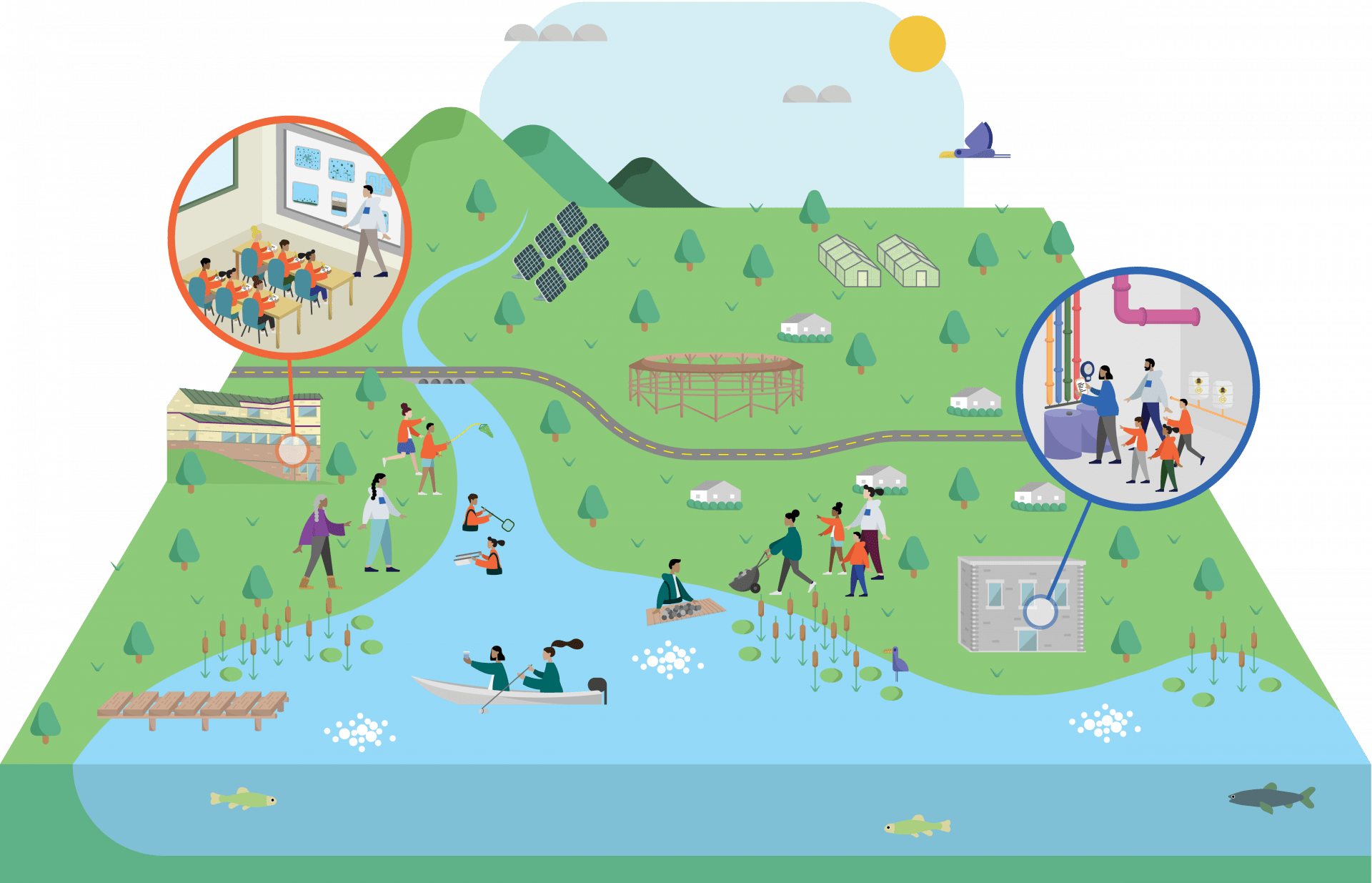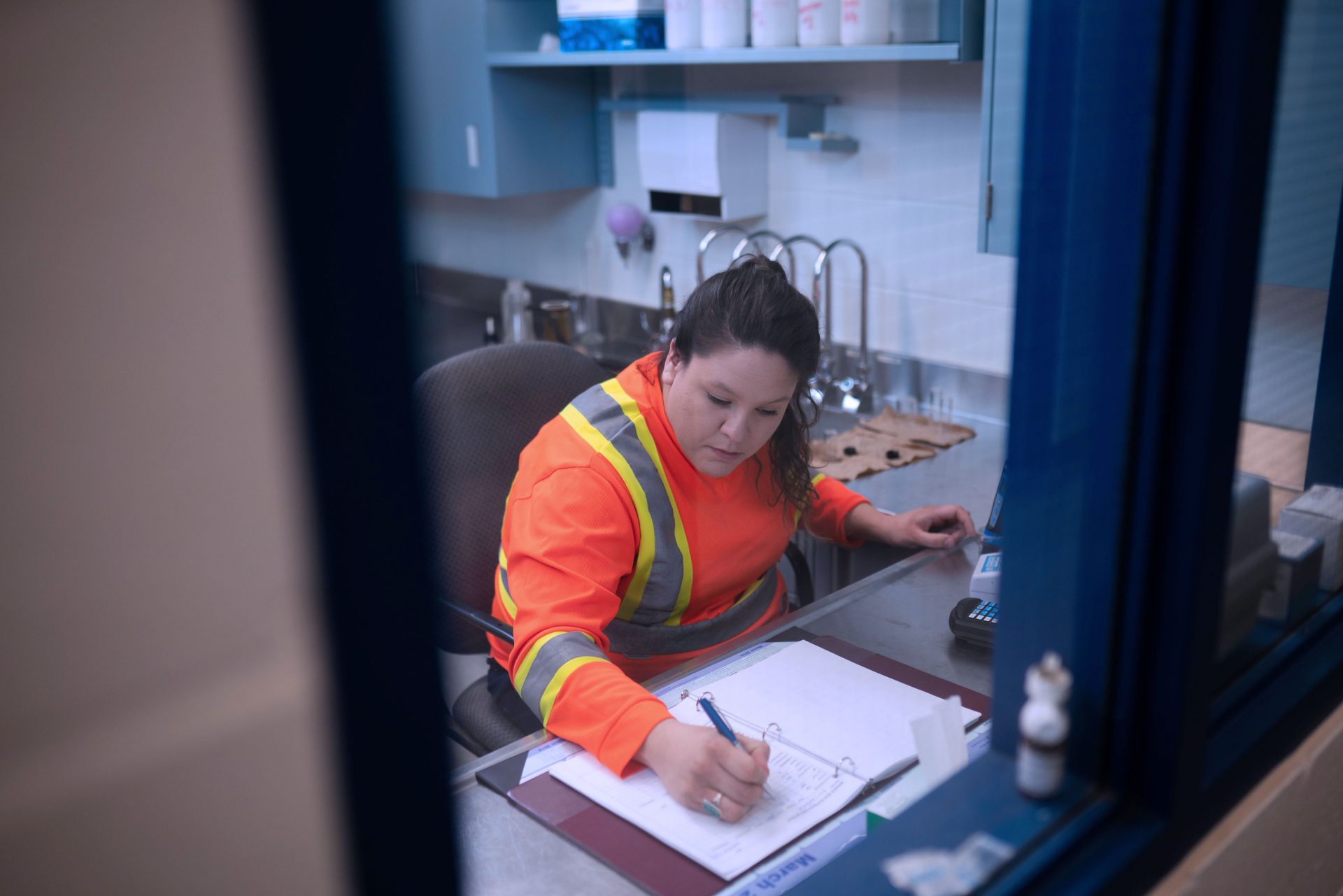Nurturing Interconnectivity
Quick Links
Home / What We Do / School Water / Nurturing Interconnectivity
Creating Inter-Program Connections
Our long-term vision is to provide opportunities for Indigenous school-aged students to see a future for themselves in the water sciences. Engaging with students in meaningful ways, year after year, to learn about water health provides continuity and a deeper connection for the students with their land and water.
Where possible, we have students visit local water bodies, speak with interns from other Water First programs, as well as arrange tours of local water and wastewater treatment plants. Through these experiences, they learn about the role they can play, as students and as emerging scientists, in protecting their water resources.

Collaborating with local educators
Our programs often begin in the classroom, where certified instructors engage with students, school administration and staff on a range of water science concepts, such as watersheds, point source pollution, and water quality analysis.
We ensure that the program content is linked to the school’s curriculum and that community values, goals and concerns are incorporated into the programming. The aim is to create opportunities for students to think about how they use the land and water, how it impacts future generations, and ultimately to inspire youth to pursue a career in water science.
Community members join in
Local community members, such as Elders, knowledge keepers, water walkers or fishermen, are invited to join in and share cultural, social and environmental insights. Students are able to interact with and deepen their understanding of local culturally significant knowledge beyond what Water First can provide.
Reciprocal learning creates a web of learning that is valued at all levels of our program implementation. We exchange knowledge and learn from each other: students, instructors, teachers and community members. Fostering connections and curiosities between students, community, land and water are accomplished through learning from each other.
Strong environmental impact, strong connections
When possible, our school programming is delivered in communities that have partnered with Water First on environmental projects like water monitoring, fish habitat restoration or weather monitoring.
We create opportunities for students to meet with community members working on local environmental projects and see first hand the powerful impact that these projects are having on their communities. By going into the field or receiving a presentation from a Water First intern, students get to try the tools and equipment, and hear about how they are used in locally-significant projects.
Inter-program connections like these inspire students to pursue careers or education in water science as they can see the impact that community members are having on the health of their local waters.
Local water experts enhance content connections
Connecting with local community members working in the water sciences can have a profound impact on youth. We see immense value in delivering our school programming in communities that have participated in the Water First Internship Program, a program that trains young Indigenous adults to become certified water treatment plant operators.
When possible, we create opportunities for school-aged youth to visit the local water treatment plant to meet with and learn from the operators, who may be graduates of the internship program! By seeing community members working to provide clean water, students deepen their connections to the content in the workshops, and can even see themselves in a similar position somday. They also strengthen their appreciation and respect for where clean water comes from and for the passionate work that goes into ensuring water is safe to drink.


